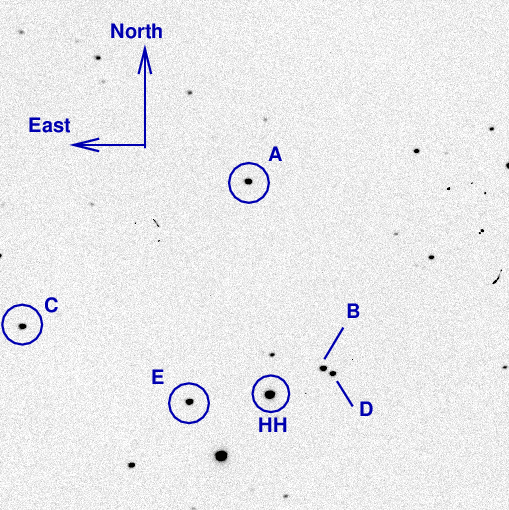
On the night of July 10/11, 2015, I observed the eclipsing contact binary star HH UMa.
The main setup was:
Notes from the night
This object is a nice eclipsing binary star with a continuously varying light curve; a number of papers describing it provide many details, including a period of 0.375494 days = 9.01 hours.
Here's a chart of the field of HH UMa which is at
RA = 11:04:48.1 Dec = +35:36:27 (J2000)
The chart is about 12x12 arcminutes.

Among the labelled stars is
A UCAC4 629-045393 V = 12.721
In order to find HH UMa, the following charts may help. First, a picture about 1.2-by-1.2 degrees on a side from the DSS2 Red plate. The bright star HD 95735, with V = 7.5, is at upper right.
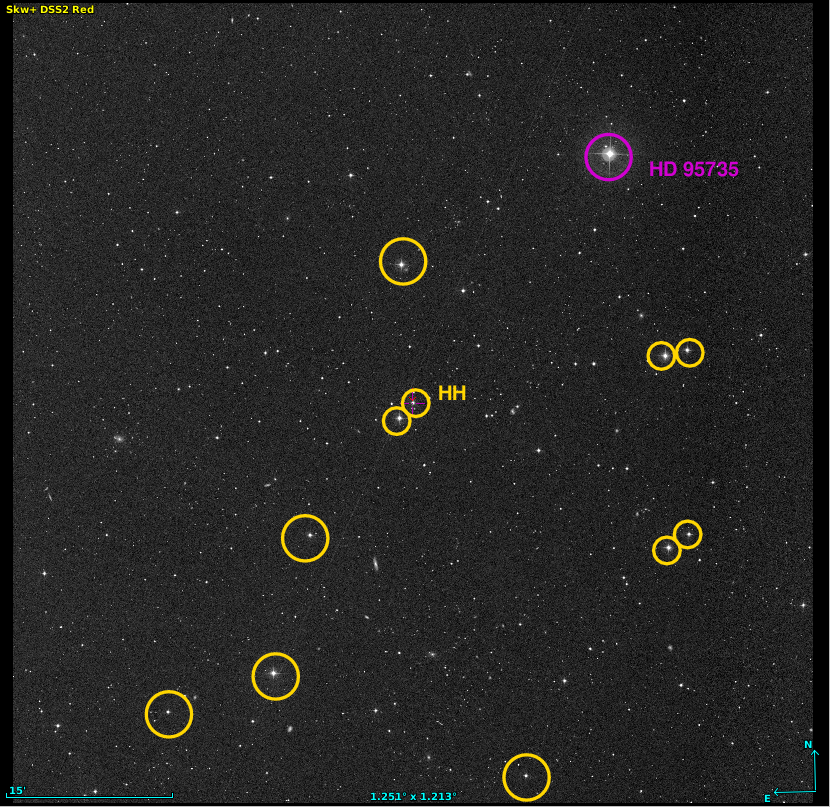
Below is a graph showing the sky brightness as a function of time during the observing run. No evidence for big clouds, and I stopped the run before the airmass grew _too_ high (just about 3.3).

Below is a graph showing the FWHM as a function of time during the observing run. I discarded frames (about 1/3 of the total) which had FWHM > 3.5 pixels, due to trailing.

Using aperture photometry with a radius of 5 pixels (radius of 7.1 arcsec), I measured the instrumental magnitudes of a number of reference stars and the target. Following the procedures outlined by Kent Honeycutt's article on inhomogeneous ensemble photometry, I used all stars available in each image to define a reference frame, and measured each star against this frame.
Sigma-vs-mag plot: The brightest star is BD +36 2151, and the second-brightest star is the target. Nearly all the weight in the ensemble solution went to BD +36 2151, so it's hard to determine the uncertainty in measurements of HH UMa.

Image adjustment factor: note a bit of cloud at the start, then pretty much clear, but rising due to airmass.
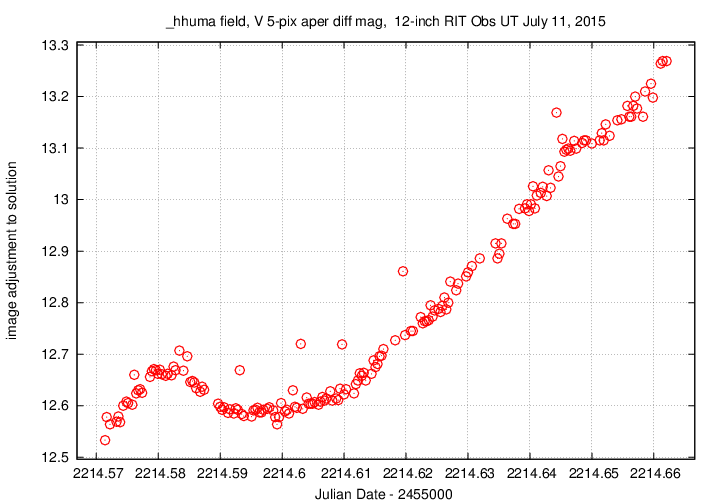
The target, shown in green, reaches a maximum, then starts to decline.
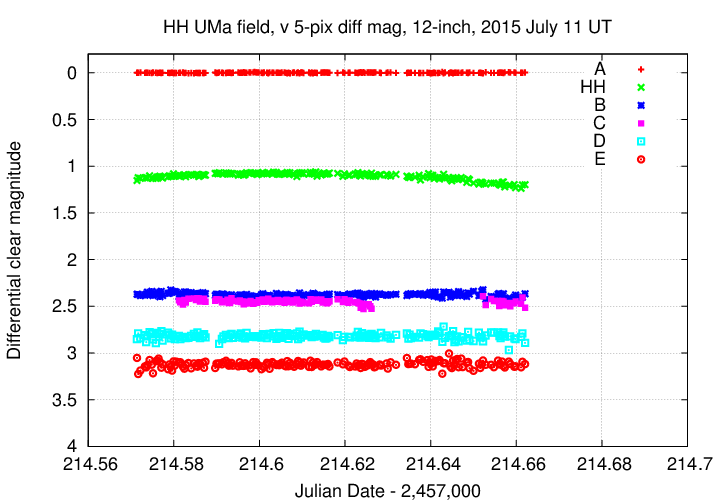
Here's a closeup, showing just HH UMa. Note the increased scatter at late times. The airmass reached about 3.3 by the end of the run.
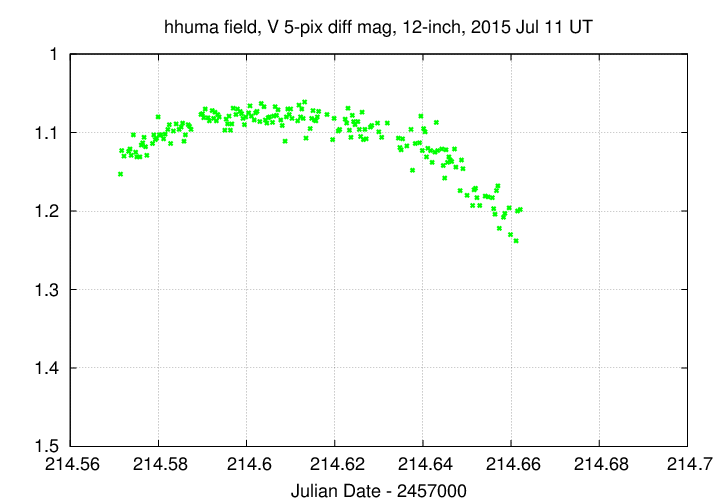
Last modified 6/12/2015 by MWR.